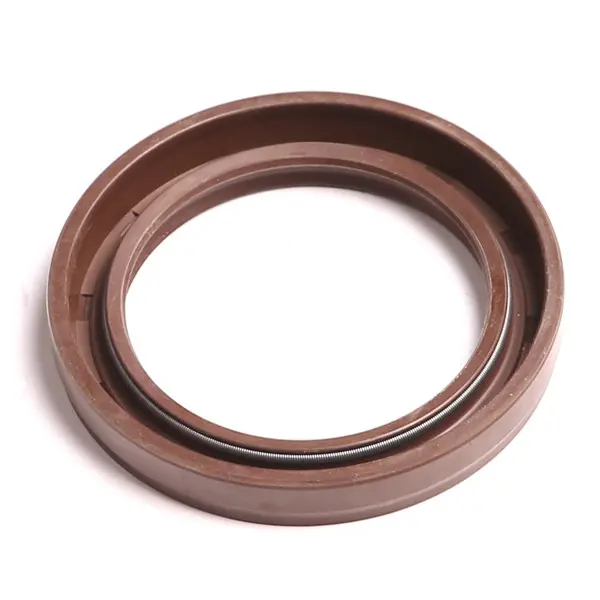Apr . 16, 2024 15:04 Back to list
cause and symptoms of a bad wheel bearing
WHAT IS A WHEEL BEARING?
Back in the days of horses and carriages, wheels were attached to the carriage by way of a wooden or metal stick axle that was fixed to the carriage, requiring the wheels to rotate on the axle. A major drawback of this setup was that there was a lot of friction between the wheel and the axle, and that friction made it harder to move the carriage, resulting in wasted energy. The other issue was that the friction would cause a lot of wear and tear on the axle and wheel where they joined, so you’d need to do constant maintenance on the joint.
Maintenance Free 88102 Eccentric Bearing For Agriculture Machinery

The first caged bearings for axles were patented in the late 1700s, and the design that has carried forward to modern times is basically a set of steel balls or rollers that are housed within a ring-shaped housing called a race. Most ball bearings will have an inner race, which is grooved and holds the balls on the inside, and a grooved outer race on the outer circumference of the bearing. In a roller bearing, the race has slots that allow the rollers to spin against the axle on the inside and the wheel on the outside.
In automotive applications, the wheel bearings are usually sealed units that connect the wheel to the suspension of the vehicle. Your wheel studs will typically be part of the bearing and if it is a drive wheel, there can be a hollow in the middle of the bearing where a spindle is inserted from the axle shaft.
A BAD WHEEL BEARING IS A SERIOUS PROBLEM
Since the wheel bearing is the sole point of contact between the car and the wheel, it’s very important that it is functioning properly. A bad bearing will be noisy, could lead to heat damage of other components, and could seize up or cause the wheel to break off the car, leaving the driver stranded.
WHAT DOES A BAD WHEEL BEARING SOUND LIKE?
There are a few things to listen and feel for when attempting to diagnose a bad wheel bearing. Some of the sounds that we associate with bad bearings can also be indicators of problems with other parts of the vehicle, but there are a few tricks to test whether the noise is a bearing issue. Here are a few sounds that can indicate a bad bearing:
- Humming noise that may increase in pitch as speeds go up.
- Snapping, clicking, or popping noises.
- Growling or rumbling noises.
- Steering wheel vibrations.
HOW TO TEST IF MY BEARING IS BAD
Some of these symptoms can also be a result of bad tires, or even a bad CV joint, but a bad bearing will sound worse when it is put under load, like when the car is turning, so use this method to test and see if it is your bearing that’s causing the noise:
- Find a deserted stretch of road, on a day with good visibility.
- Bring the vehicle up to speed. You can do this test at a variety of speeds but stay safe.
- Once you are at speed, turn to the left and to the right and see if one direction causes the sound to increase or decrease in volume.
- If the noise increases when you are turning right, the issue is with your left side, since a right turn places more load on the left side of the vehicle. If the noise increases when turning left, the issue is probably on the right.
Once you’ve done the road test and have an idea of where the sound is coming from, park your car, jack it up, and remove the tire. Don’t forget to use jack stands! With the tire off, rotate the bearing to see if there is undue resistance or if you can feel or hear clicks, grinding or other sounds coming from the bearing. It should be smooth and quiet. You can also try to wiggle it back and forth and there shouldn’t be any play in the bearing.
Check out this video for tips on diagnosing a bad wheel bearing.
HOW LONG WILL A WHEEL BEARING LAST AFTER IT STARTS MAKING NOISE?
If you catch a wheel bearing right when it starts to fail, you probably will have enough time to get to the shop or your home and do the diagnosis and repair. Be aware that driving at highway speeds will intensify any bearing issues and could lead it to fail faster, so be prudent with your route.
THE IMPORTANCE OF USING QUALITY REPLACEMENT PARTS
Your wheel bearings impact efficiency and keep the wheels attached to your car, so it’s important to use the best possible parts to complete any repair. Replacing your own wheel bearings can be an afternoon or evening job, depending on the make and model of your vehicle, so do a bit of research and don’t be afraid to tackle this important repair yourself.
Latest news
-
Spherical Bearings Enabling Bionic Joint Over-Rotation
NewsAug.22,2025
-
Stainless Steel Sphericals: Botong's Harsh-Environment Heroes
NewsAug.22,2025
-
Spherical Roller Thrust Bearings For Space Elevator Anchors
NewsAug.22,2025
-
Axial Spherical Roller Bearing: Xingtai's Motion Architects
NewsAug.22,2025
-
Ceramic Coated Bearings For Fusion Reactor Plasma Whirlpools
NewsAug.22,2025
-
Botong's Zirconia Bearing: Defying Metal Limits
NewsAug.22,2025